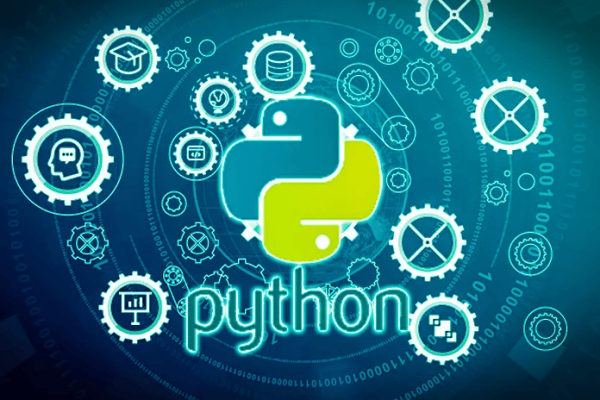Wouldn’t it be frustrating if you had to wait a long time for a response to your query? It’s a universal sentiment, isn’t it? The same goes for all. And that too, when you are a business owner, this is a risky zone to play with. You will miss out on retaining customers when your response is not on time. The right call center software, which utilizes the best call routing methods, has the potential to expertly handle this problem.
Salesforce says that 85% of people expect their call to be attended to without any delay. Want to minimize their wait times by effectively handling requests? Then, stay tuned with this write-up. Here, you will learn the types of call routing, their benefits, and the suitable algorithms to lessen the wait time.
Role of Call Center Software in Wait Times
A call center or contact center will strive to minimize the customer’s wait time. To do this, they employ various techniques like automatic call distribution, AI-integrated chats, CRM integrations, and a few more. A call center software that is compatible with AI models and Customer Relationship Management reduces the wait time considerably.
AI Integrations – By integrating AI models, the software will direct queries that can be answered by AI to the AI chats. So, the software will focus on routing other complex queries that require the assistance of a niche-based expert.
CRM Integrations – By connecting your agents with customer data, you can minimize the follow-up calls and support tickets. Instead, you can answer your customers or solve their issues at lightning speed.
Automatic Call Distribution (ACD) – Efficiently mapping connection requests to the right handler will reduce long waits. This process is referred to as ACD or call routing.
Call Routing – How Will It Help?
Call routing is the process of routing the messages to the available servers. The idea behind selecting a path, destination, and mode will benefit both the centers and customers in many ways. Some of them are listed here.
Improved First Contact Resolution Rate
If your system can solve the customer query in the first contact, it is an added value to your contact center. By mapping the call with a skilled agent who can resolve it in the first go, you can improve your first contact resolution rate.
Reduced Wait Time
By selecting the appropriate routing path and algorithm, the call center software will dramatically reduce wait times and connect you with the right person in seconds. Lower the wait time; higher the customer experience quality.
Minimizes Abandoned Call Rate
As a result of delayed response, your customers would hang up the call losing their patience. An increase in the number of missed calls, or abandoned call rate is not a good sign for a contact center. Also, you have to put in your efforts to get back to the customers by scheduling callbacks.
Better Brand Impression
Your active responses and meaningful conversations will put you at the top of your customer’s minds. Knowing that your agents will promptly support them with any issues, customers will be more likely to maintain a long-term relationship with you.
Solid Retention Rate
Though all the calls are not from disappointed customers, most of them are the outcomes of their concerns. In this case, even a minute delay in your response could prompt them to end their relationship with your business. This is kind of a last chance in your hand to convince and retain them with your timely service.
How Call Center Software Handles Call Routing
When a connection request arrives, the software performs a quick analysis to determine the appropriate node to be reached. Then, the automatic call distribution function will send the message to the right destination.
When a call or connection is received in the call center software, it will analyze the nature of the connection. You have the possibility of receiving connection requests in multiple formats like text, voice, image, video, or chat messages.
Based on the format and the message conveyed, the call center software will analyze the type of routing to perform. Then the message will be routed to the defined destination through a suitable routing algorithm.
Different Types of Routing
Routing methods can be classified into several categories based on the principles they use. Here are a few of them.
- Next Available Routing – The system searches for the next available agent to handle the call. And then the message will be passed to those agents.
- Skill-Based Routing – In addition to the availability, the software will also check if the agent or receiver is skilled enough to handle the call.
- Location-Based Routing – Considering the distance, you can simply identify the route with less traffic and assign it accordingly.
- Predictive Routing – Based on the predictions of AI and machine learning algorithms, the software will identify the suitable one as the receiver.
Routing Algorithms to Minimize Wait Times
Let us get into the skin of the routing types and understand how each method will function and based on what concepts. Here is the list of networking algorithms that are popular for routing messages among the nodes.
Adaptive Routing
Though the routing starts with a specific idea, there might occur some change midway. In such cases, adaptive routing is the suitable algorithm. This algorithm keeps track of changes, adapts swiftly, and reroutes the path immediately. This saves your customer from waiting for unpredicted changes.
Shortest Path Algorithm
If there aren’t any skill-based requirements, this shortest path algorithm could be the right choice. This call routing algorithm will estimate the distance of every possible path and finally choose the shortest one.
Load Balancing
Loading a few servers with too many requests will end up in a server crash. To avoid such cases, this load-balancing algorithm will estimate the load of all the agents, and route the call in a way it balances the load among the receivers.
Dijkstra’s Algorithm
Dijkstra’s algorithm may sound more like a shortest-path algorithm. But there is a notable difference between the two. Here, the algorithm will estimate the task complexity, weight, cost, and other factors and decide on the efficient one to route it to.
Frequently Asked Questions
- What is call routing in telecommunication?
The process of taking the call to the right node as soon as possible is called call routing. Based on the mode of communication, message format, and context, the messages will be mapped to the suitable destination.
- Can call center software help in reducing wait times?
Well-designed call center software can significantly reduce wait times. They will work on finding out the suitable functions and map the calls at the earliest.
- What is automated call distribution?
As soon as a call arrives, the software will distribute the calls to various nodes without any human intervention. The best part is, they are not assigned randomly. Instead, they analyze the message and route it to the one who can handle it effectively.
Final Thoughts
Hope you will still not commit the expensive mistake of making your customer wait. By opting for the right call center software, you can handle communication with routing intelligence and make it more efficient. You can just implement a call center software knowing it will tweak the routing strategies based on the requirements. If you are curious to share other ways of reducing the waiting times, just drop it in the comment section.
Meta Description
No more long waits for your customers. With the right call center software in place and effective call routing strategies, you can kill the boring long waits of your customers.





